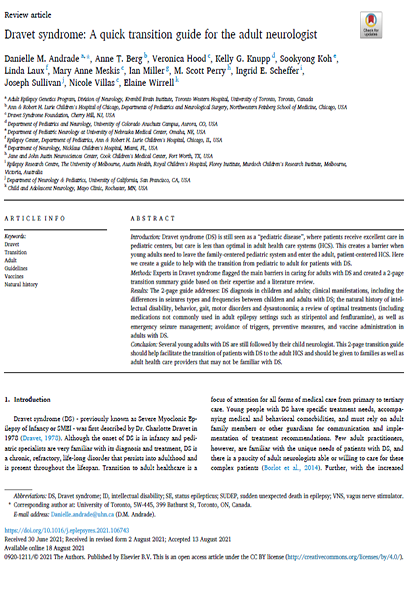Dravet syndrome: A quick transition guide for the adult neurologist
June 2021
Purpose of Review
Dravet syndrome (DS) is still seen as a "pediatric disease", where patients receive excellent care in pediatric centers, but care is less than optimal in adult health care systems (HCS). This creates a barrier when young adults need to leave the family-centered pediatric system and enter the adult, patient-centered HCS. Here we create a guide to help with the transition from pediatric to adult for patients with DS.
Methods
Experts in Dravet syndrome flagged the main barriers in caring for adults with DS and created a 2-page transition summary guide based on their expertise and a literature review.
Results
The 2-page guide addresses: DS diagnosis in children and adults; clinical manifestations, including the differences in seizures types and frequencies between children and adults with DS; the natural history of intellectual disability, behavior, gait, motor disorders and dysautonomia; a review of optimal treatments (including medications not commonly used in adult epilepsy settings such as stiripentol and fenfluramine), as well as emergency seizure management; avoidance of triggers, preventive measures, and vaccine administration in adults with DS.
Conclusion
Several young adults with DS are still followed by their child neurologist. This 2-page transition guide should help facilitate the transition of patients with DS to the adult HCS and should be given to families as well as adult health care providers that may not be familiar with DS.
Copyright 2021 The Authors. Published by Elsevier B.V. All rights reserved

